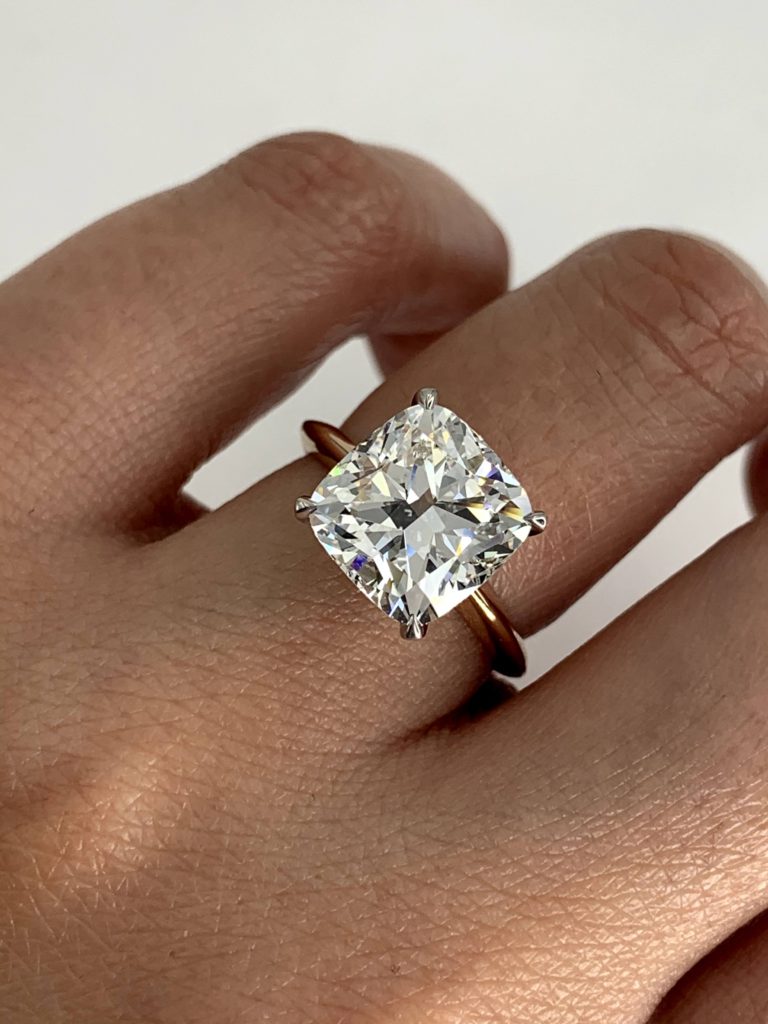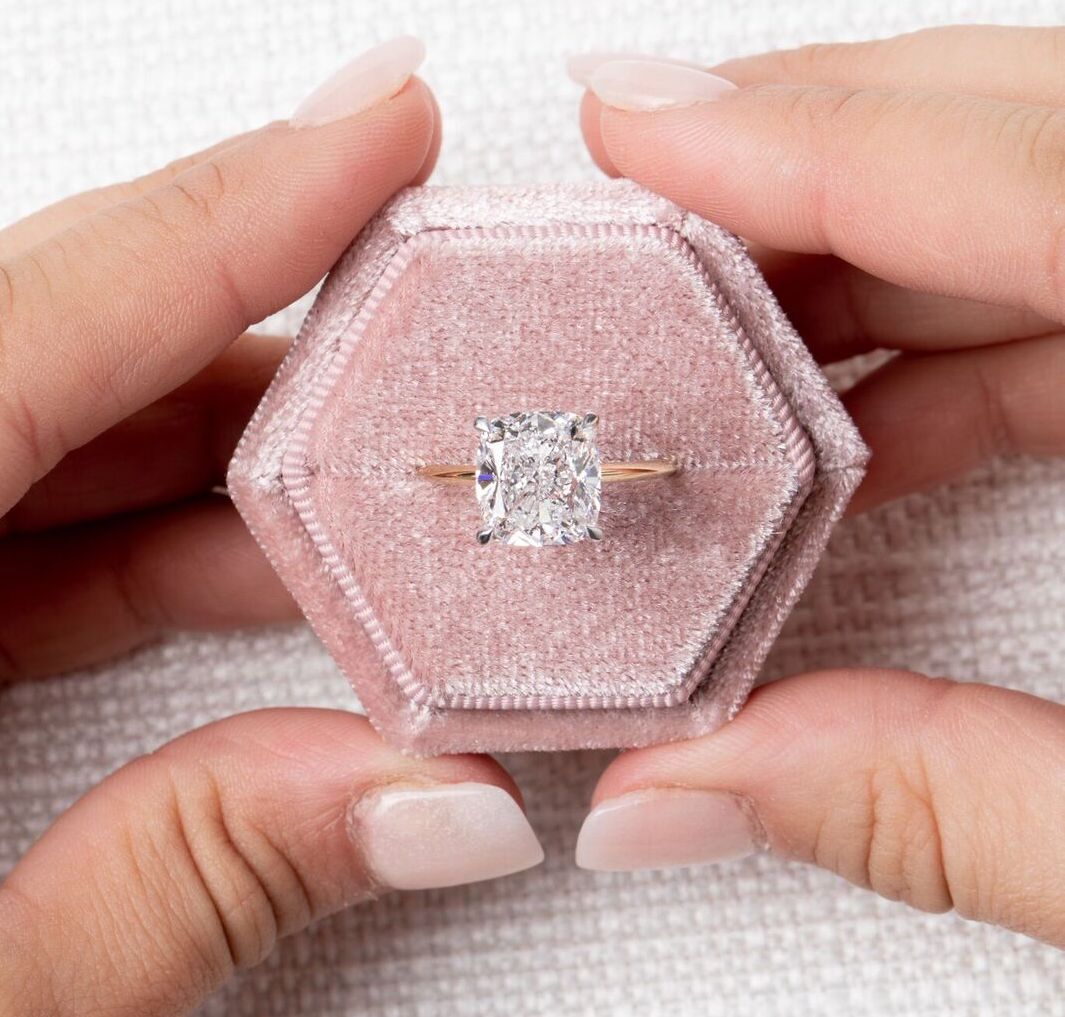When it comes to getting an engagement ring, finding the right diamond for your partner is key. From the look to the style, there are so many different factors to consider while shopping for a ring. However, before you even start looking, you also have to decide what diamond clarity you’re looking to get to begin with. Are you aiming for an SI1, SI2, VVS2, or something else entirely? It’s important to start considering all possibilities. But if you’re unsure of what the diamond clarity scale refers to and how it affects diamond selection, don’t worry; we’ve got you covered.
Today, we’re going to go over a quick breakdown of what diamond clarity is, how you can determine it, and why it’s important to begin with.
What is diamond clarity?
To start, diamond clarity is a rating given to a diamond based on how clear it is. From scuffs to scratches, each individual mark can put a diamond in a different clarity rank. Not to mention, the overall clarity of a diamond also determines it’s price and value. Here’s a quick overview of what each imperfection refers to and how it affects the diamond’s overall rating.
The first section refers to what is known as inclusions, which are imperfections on the inside of the diamond. These are categorized by:
1. Crystals: small mineral crystals inside your diamond.
2. Clouds: a gathering of small crystals or pinpoints.
3. Feathers: a fracture in the diamond crystal which occurred while the diamond was forming.
4. Pinpoints: tiny crystals that look like dots even under the microscope.
Additionally, diamonds can also have exterior markings too, often referred to as blemishes. Here are a few examples of blemishes:
1. Natural: a small area on the edge of a diamond revealing a rough crystal.
2. Extra facet: an unnecessary additional cut made on a diamond.
3. Bearding: several small marks around the outer edge of a diamond.
4. Scratches: damage to the stone from regular wear.
Now, blemishes and inclusions aside, once a diamond is examined for marks, it is then put in a specific category that determines its overall value. Here is a brief overview of each level.

1. Flawless/Internally Flawless Clarity (FL & IF)
The first tier on the diamond clarity scale is known as the Flawless (FL) and Internally Flawless (IF) tier. Flawless diamonds (FL), are considered incredibly rare in the diamond world as they have no inclusions and no blemishes.
Internally Flawless (IF) diamonds, on the other hand, are also highly valued and are free from internal inclusions of any kind. However, they also have small blemishes on their outer exterior, which prevent them from being categorized as flawless.
2. Very very slightly Included Clarity (VVS1 AND VVS2 DIAMOND)
The next tier on the diamond clarity scale is VVS, meaning very, very slightly included. These diamonds have tiny inclusions within them but are difficult to even see under a microscope. VVS2 (very, very slightly level 2), on the other hand, has more noticeable pinpoints within them. Although they aren’t much different from VVSI, they do have more imperfections than the first, which puts them a rank lower.
You can also learn more about diamond inclusions and other clarity tiers to determine the best diamond clarity here on adiamor.com.
3. Very Small clarity (VS1 AND VS2)
Next, we have the very small clarity section (VS1 and VS2), which means that imperfections with this diamond are very small and can only be seen with a microscope. VS1 stones may also have a few small crystals, whereas VS2 stones begin to show more variety in inclusions and may possess clouds, crystals, or feathers.
4. SI1, SI2, AND SOMETIMES SI3 DIAMOND CLARITY
Next, SI, which stands for slightly included, are diamonds that have visible inclusions under 10x magnification. SI2 stones, on the other hand, tend to have inclusions barely visible to the naked eye by a gemologist – but likely would require magnification for others. To give you some perspective, SI1 and SI2 are typically seen in step-cut diamonds and art deco diamond designs.
5. Included Diamond Clarity (I1, I2, I3)
And lastly, I1, I2, and I3 are diamonds that have very noticeable inclusions under a standard 10X magnification. These types of inclusions are also almost always visible to the naked eye, making them a gem far from flawless. However, despite their number of flaws, these diamonds can still be a beautiful treasure to give to your partner.

Final Thoughts
In conclusion, there’s no doubt about it; all diamonds are beautiful. Despite if they have scuffs or scratches, the most important thing about getting a ring for someone isn’t the look, but the heartfelt meaning behind it. Therefore, no matter what ring tier you choose to go with, just remember, the right person will always find value and beauty in it. And in the end, that may be the most important thing after all.

